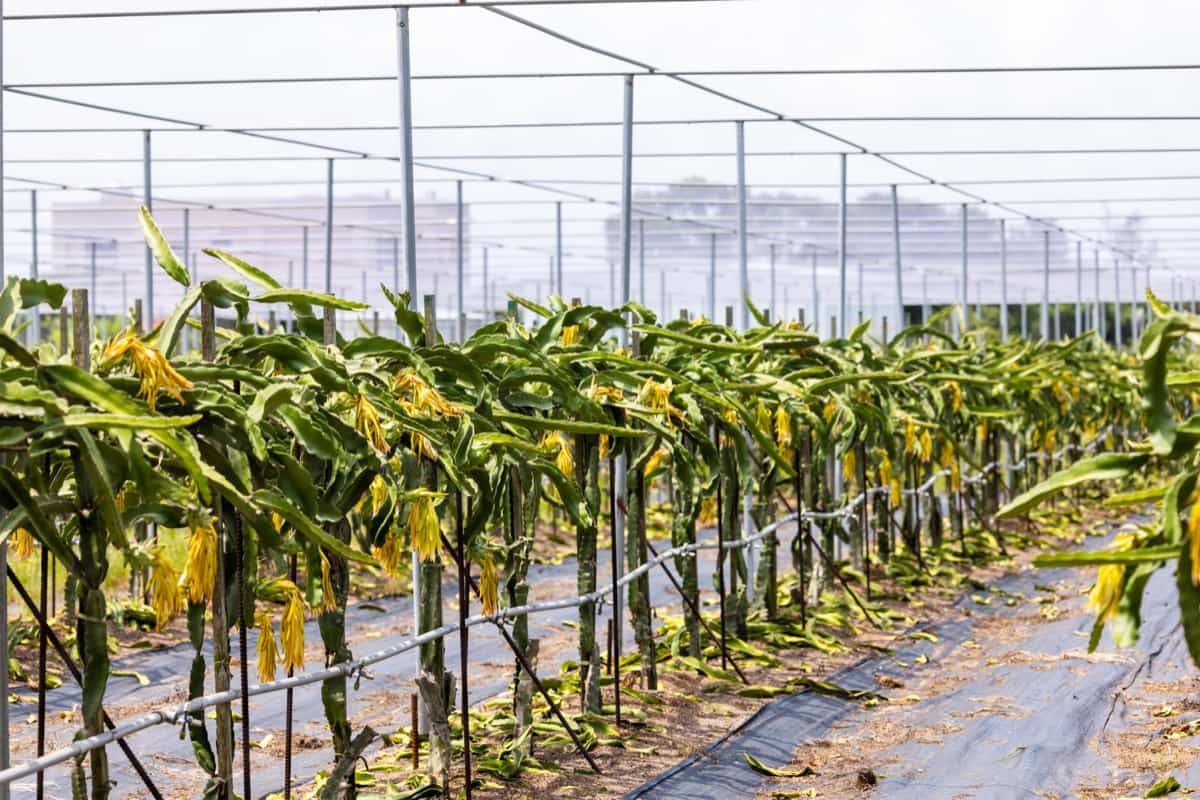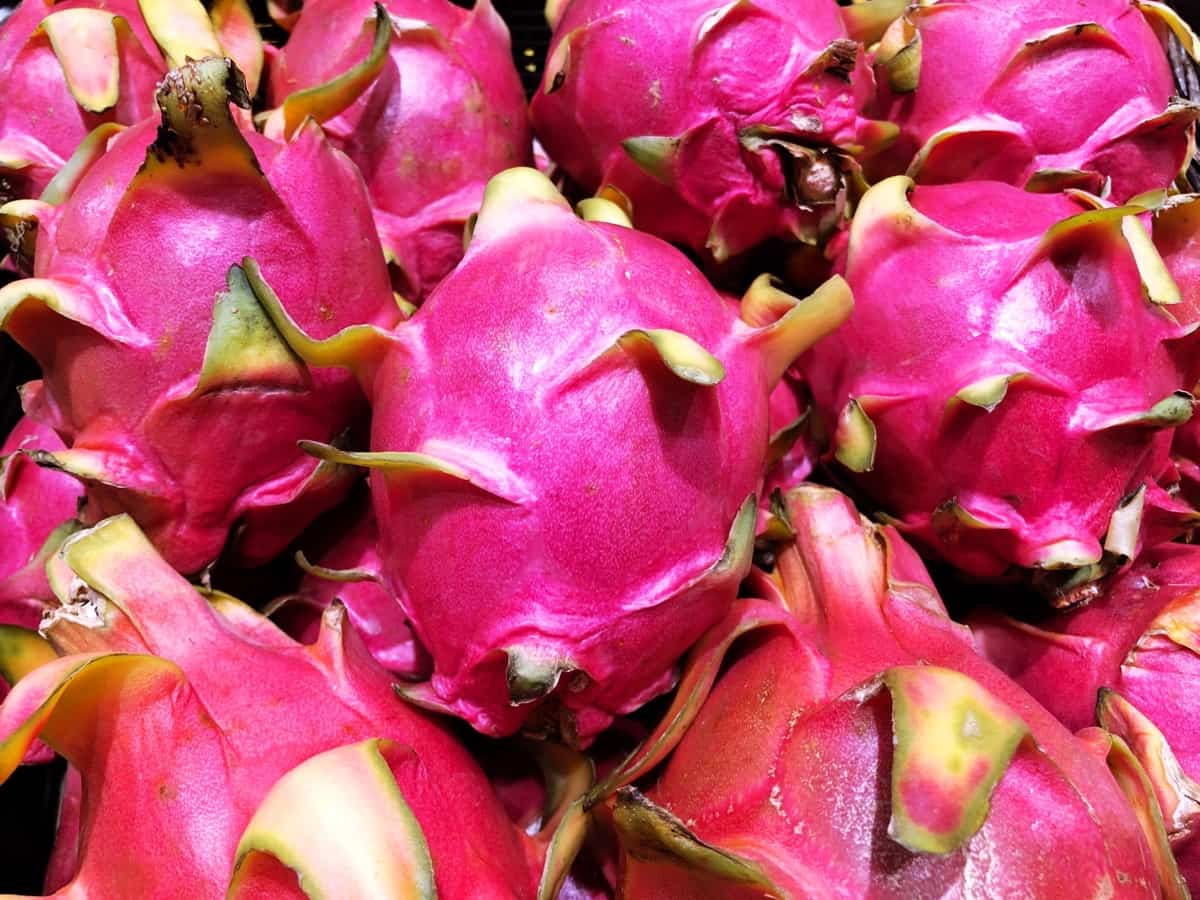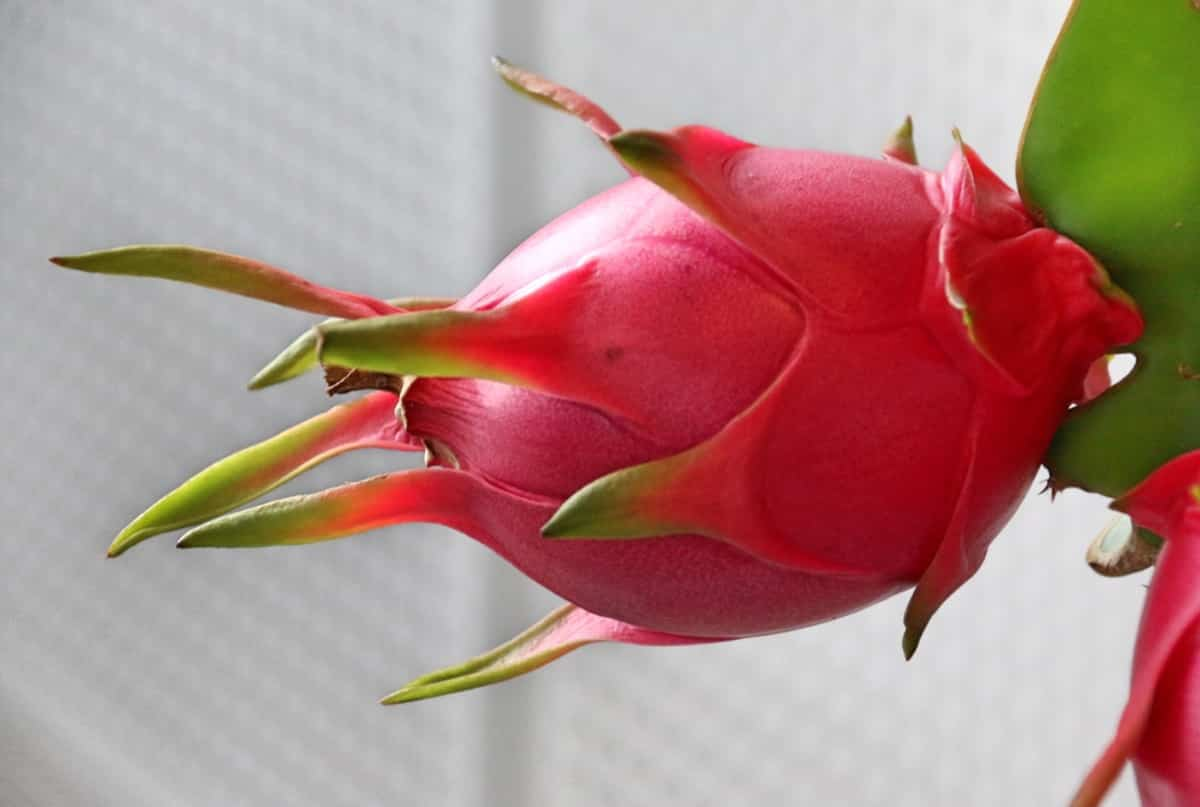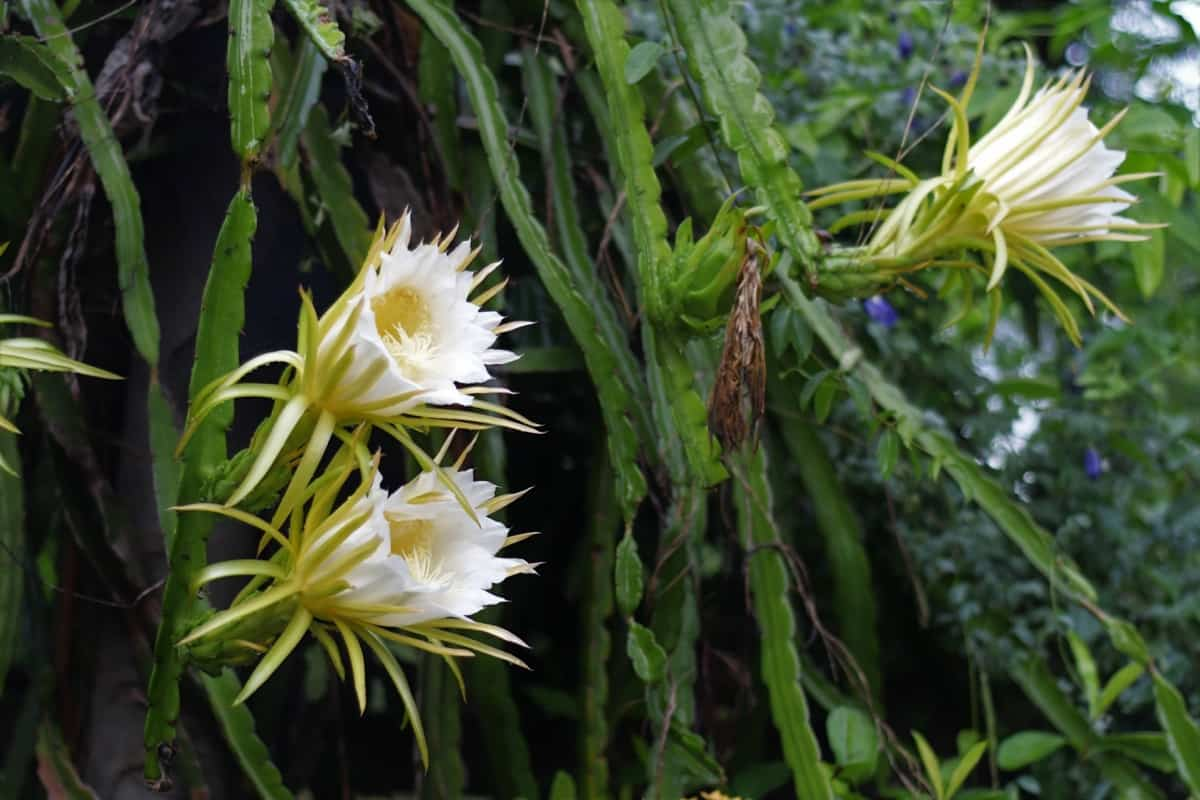Dragon fruit, also called Pitaya, is a tropical fruit that has gained popularity for its vibrant appearance and unique taste. Fertilizer plays an important role in the growth and development of Dragon fruit plants, ensuring they receive the necessary nutrients for healthy production. Farmers can ensure that their Dragon fruit plants have access to everything they need to thrive by providing these nutrients through fertilization.

Dragon Fruit Plant Fertilizer Requirements and Recommendations
Dragon Fruit Plant Fertilizer Recommendations for Optimal Yield
Providing your Dragon fruit with the right nutrients at the right time can significantly enhance its growth and productivity. Different types of fertilizers can have varying effects on Dragon plant growth and development. Understanding how each one impacts your plants is important to decide which type suits your needs best.
When applying fertilizers, it’s recommended to use slow-release options. This allows for a gradual release of nutrients over time, ensuring a steady supply for the plant without risking nutrient burn or leaching. Before planting your Dragon fruit, ensure the soil is well-drained and rich in organic matter. This will help create an ideal environment for root development and nutrient absorption.
Best Practices for Dragon Fruit Plant Nutrient Management
Dragon fruit is a unique and tropical plant that requires proper nutrient management to ensure optimal growth and yield. It’s important to conduct regular soil tests to determine the nutrient levels in your soil. This will help you understand any deficiencies or excesses that must be addressed. Based on these results, you can tailor your fertilizer application accordingly. Regularly monitoring your Dragon fruit’s nutrient levels is crucial as it grows.
Conducting periodic soil tests can give you valuable insights into any deficiencies or imbalances hindering its growth. You can adjust your fertilization program accordingly based on the test results. In terms of fertilizer application, a balanced approach is recommended. Combining organic and mineral-based fertilizers can provide a wide range of nutrients the plant needs. Organic options like composted manure or seaweed extracts are excellent as they supply nutrients and improve soil structure and microbial activity.
Balancing Nitrogen, Phosphorus, and Potassium in Dragon Fruit Plant Fertilization
It is important to note that liquid fertilizers work well for Dragon fruit plants. The roots easily absorb them and can provide nutrients quickly. Look for a balanced liquid fertilizer with equal nitrogen, phosphorus, and potassium (NPK). Balancing nitrogen, phosphorus, and potassium is crucial in Dragon fruit fertilization. While experts have different preferences regarding ratios, balanced fertilizers like 16-16-16 or 13-13-13 work well. Granular fertilizers can be spread around the plants or incorporated into the irrigation system.
In case you missed it: How to Pollinate Dragon Fruit Flowers: Hand Pollination, Natural Pollination Methods, and Tips

Additionally, consider using organic compost as part of your nutrient management plan. Organic matter enriches the soil by improving its structure and fertility. Apply 10 to 15 kg of organic compost per plant during planting and incorporate them into the topsoil. Remember that each stage of Dragon fruit growth has specific needs when it comes to nutrition. Adjusting your fertilizer schedule based on these stages will promote healthy development and maximize yields.
There are various ways to apply fertilizers to your Dragon fruit plants. You can use granular fertilizer by sprinkling it around the base of the plants or spread it through your irrigation system for more efficient distribution. Another option is slow-release fertilizer, which provides a steady nutrient supply over an extended period. Balancing these essential nutrients promotes healthy foliage growth, strong root development, and overall plant vigor. Insufficient phosphorus may result in poor flowering and reduced fruit quality.
Nutrient Deficiency Symptoms in Dragon Fruit Plant and Corrective Fertilization
Nitrogen deficiency – This essential element is vital in leaf and stem growth. If your plants lack sufficient nitrogen, you may notice pale or yellow leaves, stunted growth, and reduced flowering. To address this issue, applying a nitrogen-rich fertilizer such as urea can help replenish the soil’s nitrogen content.
Phosphorus deficiency – Phosphorus promotes root development and enhances flower production. A phosphorus deficiency can lead to slow or weak plant growth, fewer flowers, and delayed fruit ripening. Adding superphosphate fertilizer rich in phosphorus can rectify this deficiency effectively.
Potassium deficiency – It is another concern for Dragon fruit growers. Potassium aids in water absorption, disease resistance, and overall plant vigor. You might observe shriveled or discolored leaves and poor fruit quality if your plants lack potassium. Applying potash fertilizer will help restore potassium levels to optimum concentrations.
It’s important to note that different nutrient deficiencies may occur simultaneously or at different stages of plant growth. Regular monitoring of your Dragon fruits’ appearance can help identify any potential deficiencies early on so that corrective measures can be taken promptly.
Fertilizer Schedule for Dragon Fruit Farming
During the growing seasons of summer, spring, and fall, liquid fertilizer is recommended to fertilize your Dragon fruit once a month. This will provide the necessary nutrients for optimal growth and development. However, no additional fertilizer is required during winter when growth slows down. Giving your Dragon fruit a break during this time is important to allow for natural dormancy.
In addition to regular liquid fertilization, incorporating a small amount of slow-release fertilizer into the soil when repotting in spring or fall can be beneficial. By following this fertilizer schedule and incorporating both liquid and slow-release fertilizers at appropriate times, you’ll give your Dragon fruit plants the best chance at thriving and producing high-quality fruits. Remember always to read and follow instructions on the packaging for proper application rates.
In case you missed it: Frequently Asked Questions About Growing Thai Dragon Pepper from Seed to Harvest

Fertilizer Recommendations for Different Stages of Dragon Fruit Plant Growth
To ensure optimal yield and healthy growth of your Dragon fruit plants, it is essential to understand their fertilizer requirements and follow proper management practices. By providing the right balance of nutrients at each growth stage, you can enhance the productivity and quality of your Dragon fruit harvest. Remember that different stages of Dragon fruit growth have varying fertilizer needs. Adjusting your approach accordingly will contribute significantly to healthier plants and higher yields.
Fertilizer Application Table for Different Fruit Growth Stages
| Stages | Application rate |
| 1st Year | 50 g Urea + 50 g Super phosphate/3 times/year |
| Fruit-bearing stage | 0.5 kg Urea + 0.5 kg Super phosphate + 0.5 kg potassium + 20 kg organic fertilizer/ 3 times/year |
| Fruit development | Additional application of microelements such as foliar fertilizer can be used 1 time/ week |
| Fruits harvesting | The fertilizer must stop at least 10 days before the fruits are harvested |
Organic and Homemade Fertilizer Options for Dragon Fruit Plant Production
Organic fertilizers also play a crucial role in promoting healthy Dragon fruit growth. Compost and other organic materials enrich the soil with beneficial microorganisms that aid in breaking down nutrients for better plant utilization. Compost tea is a homemade fertilizer for Dragon plants and is easily made with kitchen scraps, yard waste, and water.
By steeping these ingredients in water for several days, you create a nutrient-rich liquid that can be applied directly to the soil. It is another effective liquid fertilizer for Dragon Plants is to use compost or worm castings steeped in water. This nutrient-rich concoction will give your Dragon fruit plants the necessary organic matter they crave while improving soil structure. Seaweed extract is a natural product derived from seaweed that contains trace minerals and growth-promoting hormones that benefit Dragon fruit production.
Dilute the extract in water according to package instructions and apply it regularly during the growing season. Packed with natural growth hormones and trace elements, seaweed extract promotes root development and enhances resistance against pests and diseases. In addition to compost tea and seaweed extract, other organic options include bone meal, fish emulsion, and worm castings. Each homemade fertilizer provides specific nutrients beneficial for healthy Dragon fruit growth.
In case you missed it: Frequently Asked Questions About Dragon/Pitaya Fruit Farming

Conclusion
Providing the right fertilizer for your Dragon fruit plants is crucial for optimal yield and healthy growth. These nutrients include nitrogen, phosphorus, and potassium – vital elements needed for plant growth.
- Ultimate Guide to Ossabaw Island Hog: Breeding, Raising, Diet, and Care
- Ultimate Guide to Juliana Pig: Raising Facts, Size, Diet, Care, and Lifespan
- Raising Lleyn Sheep: Disadvantages, Price, Uses, Characteristics, and Care
- Ultimate Guide to Meishan Pig: Breed Facts, Breeding, Raising, and Care
- Ultimate Guide to Teacup Pigs: Raising, Diet, Lifespan, Cost, and Care
- Guide to Raising Poll Dorset Sheep: Facts, Profile, Characteristics, Uses, and Care
- Ultimate Guide to Bighorn Sheep: Characteristics, Diet, Lifespan, Breeding, and Lifecycle
- Ultimate Guide to Raising Katahdin Sheep: Farming Facts, Breed Profile, Uses, and Care
- Ultimate Guide to Raising Oreo Cows: Belted Galloways Farming Facts, Profile, Uses, and Care